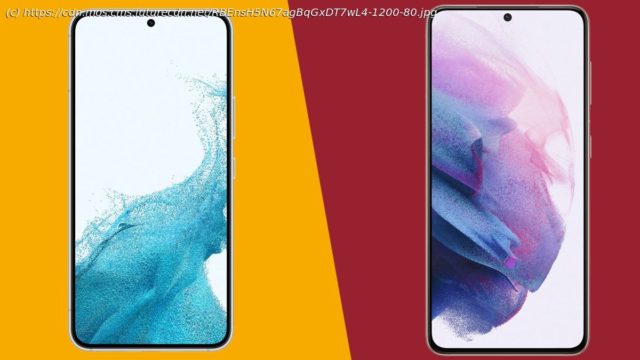Samsung follows up its surprisingly dinky 2021 hit with an even smaller flagship.
The Samsung Galaxy S22 has been announced, representing the first major mainstream phone launch of 2022. So how does it compare to its predecessor, the Samsung Galaxy S21? We haven’t had a chance to review the Galaxy S22 as yet, but we do have the official lowdown on its specifications. There have been advances in certain areas, interesting alternative choices in others, and some instances where things have stayed the same. We’ll be updating this piece with a more in-depth breakdown once we’ve spent some quality time with the Galaxy S22. For now, let’s take a look at how these compact flagships stack up, feature for feature. The Samsung Galaxy S22 was unveiled on February 9, 2022. Prices start from $799.99 / £769 / AU$1,249 for the 128GB model, and move up to $ 849.99/ £819 / AU$1,349 for 256GB. The Samsung Galaxy S21 arrived on January 29, 2021, and was most notable for taking a more affordable approach than the Galaxy S20 before it. Prices started from $799 / £769 / AU$1,249 for the 128GB model, while the 256GB model cost $849.99 / £819 / AU$1,349. It’s very similar pricing, then, but of course you’ll be able to get the Galaxy S21 for much less money now that its successor is imminent. Samsung has taken the interesting step of reducing the size of the Samsung Galaxy S22 compared to its predecessor. The Samsung Galaxy S21 was hardly a big phone at 151.7 x 71.2 x 7.9mm. But the Galaxy S22 is smaller in every department at 146 x 70.6 x 7.6mm. They share a very similar weight, with the Galaxy S21 weighing 169g, and the Galaxy S21 tipping the scales at 168g. Essentially, though, Samsung is doubling down on the Galaxy S21’s status as a compact flagship. This is the phone to get if you’re sick of super-sized phablets hogging all your pocket space. In terms of appearances, the Galaxy S22 might just induce a case of deja vu. It’s mostly the same design as the Galaxy S21, with the same ‘Contour Cut’ camera flowing from the side frame to the rear of the phone. Not that we’re complaining – no manufacturer has handled the thorny issue of the sticky-outy camera module better than Samsung in recent years. Both phones have managed to acquire an IP68 rating, meaning they’re equally dust- and water-resistant. No complaints here. The Galaxy S21’s rear cover is formed from a plastic material that Samsung calls ‘Glasstic’, which we’ve always felt was a little cheap. The S22 switches that for glass on the rear, which feels more premium than the S21. As part of the Samsung Galaxy S22’s shrinking process, Samsung has downsized its display.






